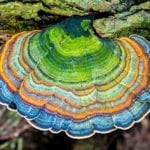 Our World
Our World  Our World
Our World  Pop Culture
Pop Culture 10 Incredible Female Comic Book Artists
 Crime
Crime 10 Terrifying Serial Killers from Centuries Ago
 Technology
Technology 10 Hilariously Over-Engineered Solutions to Simple Problems
 Miscellaneous
Miscellaneous 10 Ironic News Stories Straight out of an Alanis Morissette Song
 Politics
Politics 10 Lesser-Known Far-Right Groups of the 21st Century
 History
History Ten Revealing Facts about Daily Domestic Life in the Old West
 Weird Stuff
Weird Stuff 10 Everyday Products Surprisingly Made by Inmates
 Movies and TV
Movies and TV 10 Actors Dragged out of Retirement for One Key Role
 Creepy
Creepy 10 Lesser-Known Shapeshifter Legends from Around the World
 Our World
Our World 10 Science Facts That Will Change How You Look at the World
 Pop Culture
Pop Culture 10 Incredible Female Comic Book Artists
 Crime
Crime 10 Terrifying Serial Killers from Centuries Ago
Who's Behind Listverse?

Jamie Frater
Head Editor
Jamie founded Listverse due to an insatiable desire to share fascinating, obscure, and bizarre facts. He has been a guest speaker on numerous national radio and television stations and is a five time published author.
More About Us Technology
Technology 10 Hilariously Over-Engineered Solutions to Simple Problems
 Miscellaneous
Miscellaneous 10 Ironic News Stories Straight out of an Alanis Morissette Song
 Politics
Politics 10 Lesser-Known Far-Right Groups of the 21st Century
 History
History Ten Revealing Facts about Daily Domestic Life in the Old West
 Weird Stuff
Weird Stuff 10 Everyday Products Surprisingly Made by Inmates
 Movies and TV
Movies and TV 10 Actors Dragged out of Retirement for One Key Role
 Creepy
Creepy 10 Lesser-Known Shapeshifter Legends from Around the World
Top 10 Amazing Scientific Phenomena Caught On Video
The world is an amazing place, sometimes more so than we ever imagine. We are living in a Golden Age for those who are interested in scientific phenomena.
See Also: 10 Jaw-Dropping Videos Of Amazing Scientific Phenomena
No longer do you have to get your hands dirty in a smelly lab or trek into unknown regions to witness something wonderful. You just have to start up your computer and watch a video of it. Here are 10 phenomena worth seeing and the scientific theories behind them.
10 Prince Rupert’s Drops
Prince Rupert’s drops have been fascinating scientists for hundreds of years. In 1661, a paper was presented at the Royal Society of London on these strange objects that look like glass tadpoles. The drops are named after Prince Rupert of the Rhine, who first introduced them to his cousin King Charles II.
Made by dropping molten glass into water, they exhibit weird properties when exposed to forces. Hit a Prince Rupert’s drop with a hammer on the bulbous end, and nothing happens. Yet with just the slightest damage to the tail end, the whole drop explodes violently. Charles had an interest in science and so challenged the Royal Society to explain the behavior of the drops.
His savants were stumped. It took nearly 400 years, but modern scientists armed with high-speed cameras were finally able to see directly how the drops exploded. A shock wave can be seen traveling from the tail to the head at around 1.6 kilometers per second (1 MPS) as the stresses inherent in the drop are released.[1]
When the Prince Rupert’s drop is made in the water, the outer layer becomes a solid while the inner glass remains molten. As the inner glass cools, it shrinks in volume and creates a strong structure by pulling against itself, making the head of the drop incredibly resistant to damage. But as soon as the weaker tail is broken, the stress is released, allowing the whole drop to erupt into a fine powder.
9 See Light Moving
While light is technically the only thing we see, we never see it moving. Moments after you flip a light switch, the light from a bulb has already crossed the room. So fast is light that only on the largest scales would it be conceivable that you could track its movements—until now.
Using a camera capable of taking 1 trillion frames per second, scientists have been able to create videos of light moving across everyday objects like apples and Coke bottles. Firing a laser pulse that only lasts for 1 quadrillionth of a second, the researchers could capture what amounts to a bullet of light as it passes over things.
Other teams have already improved on the techniques used to create the video above. Using a camera able to take 10 trillion frames per second, they can follow a single pulse of light rather than having to repeat the experiment for each frame.[2]
8 Cloud Chambers
Radioactivity was first discovered when X-rays were found to be fogging photographic plates. Ever since, people have been searching for ways of observing radiation to better understand the phenomenon.
One of the earliest—and still coolest—ways was to create a cloud chamber. Cloud chambers take advantage of the fact that droplets of vapor will condense around ions. When a radioactive particle passes through the chamber, it leaves a trail of ions in its wake. As the vapor condenses on them, you can directly observe the path that the particle has taken.[3]
Cloud chambers have been replaced today with more sensitive methods of detection, but they were vital in the discovery of subatomic particles like the positron, muon, and kaon. Today, cloud chambers are useful in displaying the different types of radiation. Alpha particles show short, heavy lines, while beta particles have longer, thinner ones.
7 Superfluid
Everyone knows what a fluid is. Well, a superfluid is like that but more so. When you stir a fluid like tea in a mug, you might get a swirling vortex. But within seconds, the friction between the fluid particles will stop the flow. In a superfluid, there is no friction. So, a stirred cup of superfluid will continue to rotate forever. Such is the weird world of the superfluids.
In a similar way, it is possible to construct fountains that will continue to jet upward without adding more energy because no energy is lost to friction in a superfluid. The most bizarre property of superfluids? They can climb out of any container (as long as it is not infinitely tall) because their lack of viscosity allows them to form a thin layer that completely covers the container.[4]
For those wanting to play around with a superfluid, there is bad news. Not all chemicals can form superfluids. For those that do exist, they only occur within a few degrees of absolute zero.
6 Ice Wave
A frozen lake can be a haunting place. As the ice cracks, eerie pinging noises can echo across the surface. Looking down, you might be able to see animals that have become frozen and trapped. But perhaps the most amazing ability of a frozen lake is to form waves of ice that crash on the shore.
If only the top layer becomes solid when a lake freezes, it is possible for the ice on top to move. If a warm wind passes over the lake, the whole sheet of ice may begin to move. All that ice has to go somewhere.[5]
As the ice reaches the shore, the sudden friction and stress causes the ice to shatter and build up. Sometimes, these ice waves can be several feet high and travel inland. The cracking of the crystals that make up the ice sheet gives the creation of ice waves an eerie tickling sound like thousands of glasses being shattered.
5 Volcanic Shock Wave
A volcanic eruption is just about the most powerful explosion that humans are likely to see on Earth. In seconds, energy equivalent to multiple atomic bombs can launch thousands of tons of rock and debris miles into the air. Best not to be too close when that happens.
However, some people are inquisitive about these things and will linger near an erupting volcano to record a video of it. In 2014, Mount Tavurvur in Papua New Guinea exploded. Luckily for us, people were there to film it. As the volcano blew, a shock wave could be seen traveling upward into the clouds and outward toward the observer. It broke over the boat like a thunderclap.
The explosion that produced the shock wave was probably caused by gas building up within the volcano as magma blocked its escape. The sudden release of this gas compressed the air around the volcano and produced the wave that rocketed out in all directions.[6]
4 Volcanic Lightning
When Mount Vesuvius erupted in AD 79, Pliny the Younger observed something strange about the explosion: “There was a most intense darkness rendered more appalling by the fitful gleam of torches at intervals obscured by the transient blaze of lightning.”
This is the first recorded mention of volcanic lightning. When a thunderous cloud of dust and rock is propelled into the sky by a volcano, huge bolts of lightning can be seen dancing around it.
Volcanic lightning does not occur with every eruption. It is caused by a buildup of charge.
In the heat of a volcano, electrons can be easily kicked off an atom to produce a positively charged ion. Electrons can also be transferred by collisions between dust particles. The electrons can then attach to other atoms to make negatively charged ions.[7]
From the different ways that the ions move due to size and speed, a buildup of charge can occur across the plume of the eruption. When the charge is sufficiently high, it will transfer from one region to another in the blisteringly fast and hot bolts of lightning seen in the video above.
3 Levitating Frogs
Each year, the Ig Nobel Prizes are awarded for research that “makes people laugh and then think.”
In 2000, Andre Geim won the Ig Nobel Prize for levitating a frog using magnets. His curiosity had been piqued when he poured some water directly into a machine with powerful electromagnets around it. The water clung to the walls of the tube, and droplets even began to float. Geim had discovered that magnetic fields could act strongly enough on water to overcome the Earth’s gravitational pull.
Before this, diamagnetic materials—those without an overall magnetic field—were thought not to interact much at all with magnetic fields. Geim moved from water droplets to live animals, including frogs. These could be levitated because of their water content and led to some bemused-looking animals in strong magnetic fields.[8]
The sting of winning an Ig Nobel Prize was somewhat lessened when Geim won a real Nobel Prize for his part in the discovery of graphene.
2 Laminar Flow
Can you unmix a liquid?
It turns out that you can under certain conditions. If you pour orange juice into water, then it is unlikely that you will ever separate the two. But using dyed corn syrup as shown in the video above, you can. This is due to the special properties of syrup as a fluid and what is called laminar flow. This is a type of movement within fluids where layers tend to move in the same direction as each other without mixing.
This example is a special type of laminar flow, known as Stokes flow, where the fluid used is so thick and viscous that it barely allows any diffusion of particles. The mixture is stirred slowly, so it does not form any turbulence that would really mix the colored dyes together.[9]
It only appears that the dyes mix because light is passing through the layers that contain the separate dyes. Slowly reversing the mixing brings the dyes back to their original positions.
1 Cherenkov Radiation
You might think that nothing moves faster than the speed of light. Indeed, the speed of light does seem to be a speed limit in this universe that nothing can break—as long as you are talking about the speed of light in a vacuum. When light enters any transparent medium, it slows down. This is due to the electronic component of light’s electromagnetic waves interacting with the wave properties of electrons in the medium.
It turns out that many objects can move faster than this new, slower speed of light. If a particle enters water at 99 percent of the speed of light in a vacuum, then the particle will overtake light, which only travels at 75 percent of the speed of light in a vacuum in water. And we can actually see this happen.
When the particle passes through the electrons of the medium, light is given off as it disrupts the electronic field. A nuclear reactor in water glows blue because it is flinging off electrons at such high speeds—as seen when the reactor is activated above. The eerie glow of radioactive sources is even cooler than most people think.[10]
For more lists like this, check out 10 Astounding Natural Phenomena Caught On Film and 10 Strange Electrical Phenomena Found In Nature.








